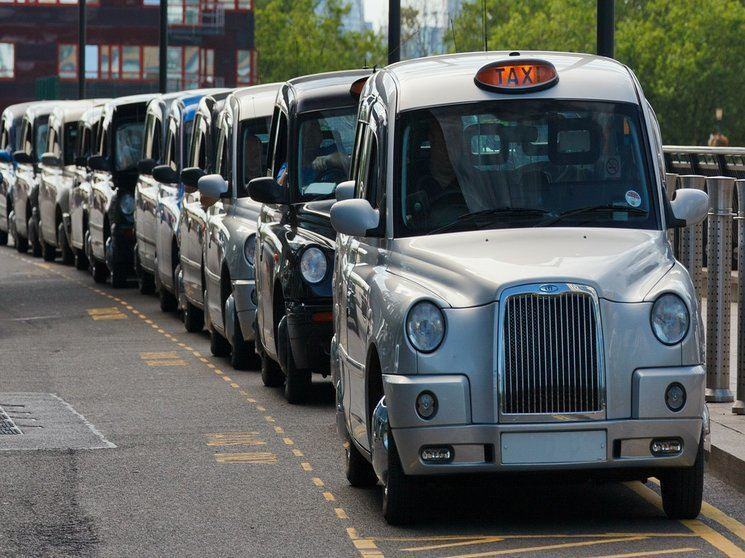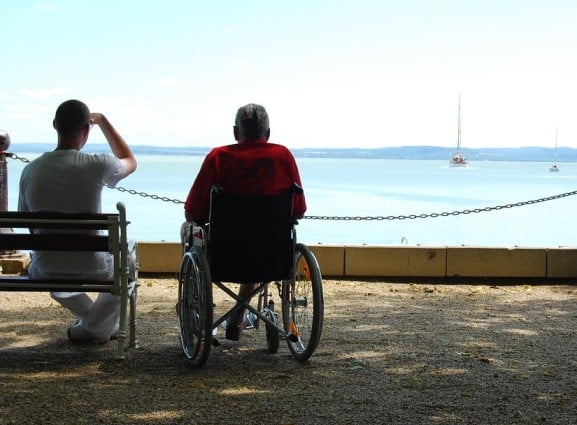No matter where you’re headed, the most important piece of advice is to keep your needs in mind. You are in charge of your trip or vacation, so make sure you see what you want to see, do what you want to do, and use creativity to make it all possible. A little planning will make the trip easier from start to finish, helping you get the most out of your vacation no matter your handicap or disability.
Disabled Travel Tips

Consider your physical needs and what you want out of your trip
The biggest way you can make your travel easier is to start by considering your personal needs. This includes physical needs as well as what you want out of your trip. By taking the time to evaluate what you’ll need and the ideal ways you can meet those needs, you will make it easier to tailor your trip to your specific requirements.
Ask yourself these five important questions
To help consider your wants and needs, answer the following questions:
- What is my ideal mode of transportation?
- What will make this trip easier on me and those traveling with me?
- What is the goal of my trip?
- How can I make accommodations to get the most out of my trip?
- What would I like on my trip from my daily life in order to be the most comfortable?
Once you’ve considered your trip as a whole and what you will want, need, and would like to experience, you can then dig into the planning portion of the trip.
Plan where you’ll be going and what you would like to do
Planning is a necessity when it comes to organizing handicap or wheelchair accessible travel. In addition to planning where you’ll be going and what you’ll be doing while you’re there, you’ll also need to plan your transportation and accommodations to ensure your needs are met and your trip runs smoothly.
Discuss your needs with a transportation representative
After you’ve established your personal needs, you will need to talk to a transportation representative, such as an airline, bus, or whoever is driving, to discuss options for your specific disability or handicap. You can create a list of who you need to speak to by considering the trip from beginning to end and answering the following questions:
- How am I getting to my destination?
- Car, bus, airplane, taxi
- How will I move from place to place once I arrive?
- Public transportation, family member or friend driving, taxi, Uber
- Where will I be staying?
- Hotel, Airbnb, family member or friend’s house, cruise ship
- What will I need in my room or on the property?
- Accessible shower, storage space for a scooter or wheelchair

Consider how much time you’ll need at each phase of the trip
The last thing to keep in mind before booking is how much time you’ll need at each step. It may take longer to work with an airline at the airport or to negotiate the right taxi or bus to provide what you need. Opting to put more time into your schedule will give you a buffer to handle any mishaps, confusion, or detours along the way.
Book each step of your trip with your needs in mind
Now that you know what you’ll need and where you’re headed, you can book each leg of your trip with these needs in mind. It’s easiest to book accommodations over the phone rather than online because you can talk with someone and explain what you need and ask any questions you have. Many websites have information in the FAQ section, but a customer service representative may offer more detailed information.
Consider options other than airline tickets and a hotel
Booking can often go beyond airline tickets and a hotel. Consider if you’ll need to take a taxi, tour bus, or other transportation at your destination. You may be able to book this in advance (such as an airport shuttle) and you’ll have confirmation that they can provide the type of transportation you need. If you’re considering taking any tours, you may want to look into this ahead of time as well. Some tour groups are always handicap accessible, while others may need specific buses, lifts, or seating.
Use creativity to save yourself some stress
Using creativity when booking a trip can save you a lot of stress. One of the biggest ways to use creativity is to consider choosing more portable and stable mobility devices or equipment. For example, a scooter may make getting through the airport a bit easier than using a cane or walker. Or setting up airport transport ahead of time may be easier than finding a wheelchair once you arrive.

Consider renting a mobility device at your destination
It’s always a good idea to consider what will make your trip easiest from beginning to end. This may include the possibility of renting a wheelchair or scooter at your destination. This is a great option for those that can get around well on their own with limited assistance, but also know that vacations and trips can be taxing. Scootaround offers mobility rentals throughout North America and on all major cruise lines. By renting equipment at your destination, you may save time at the airport and free up some cargo space in your car.
Use public transportation where possible
Another option to consider is using public transportation over Uber, taxis, or a shuttle service. Many public transport options are outfitted to be handicap accessible and can save you time and the hassle of calling for the appropriate vehicle on the spot. The best way to navigate public transport options is to do some research while planning your trip so you know the correct routes, stops, and payment process before you get there.
Talk to your doctor to ensure you have adequate medication and equipment
Before going on an extended trip it’s important to talk to your doctor. This can help answer any questions you may have about what to expect while traveling, as well as give insight into how to make your trip easier and more comfortable.
The most obvious reason to talk to your doctor is to ensure you have the proper amount of medication and equipment with you throughout your trip. The pharmacy can be helpful with travel as well, but you should start with your doctor.
Consider these topics before your medical appointment
Consider these topics before discussing your trip with your doctor or medical team:
- Where you’re going and for how long
- What you plan to do, especially if the trip involves a lot of travel, sightseeing, and activity out of your usual daily routine
- What you feel you’ll need while you’re away
- Medication in different sized packaging
- Supplies you may run out of
- Discuss a medical statement
- This will give your travel companions as well as any professionals insight into your needs
- How you are traveling (airplane, car, public transport)
- Are there any issues you should be aware of (swelling, fatigue, symptom flares)?
Request a medical statement from your doctor
At your doctor’s visit you should discuss a medical statement. This is basically a letter from your doctor on their official letterhead that highlights your needs and medical necessities. Having a letter on hand can be useful to help explain to others what you need and why. This can be useful at a hotel or airline to quickly explain your situation and what accommodations you need. It can also be useful for contacting your doctor if you have a question or need something while on your trip.
Make sure your medication is clearly labelled and in its original packaging
Traveling with medication isn’t as tricky as it may seem. The following tips and advice mostly apply to flying in the United States with the TSA, but they can also be applied to traveling in a car or going abroad. A general rule when traveling with medication, whether over the counter or prescription, is to make sure everything is clearly labeled and in its original packaging if possible. This ensures that your medication is clearly identified and belongs to you, which can make dealing with authorities much easier.
Make sure your medication includes the manufacturer’s information
Over the counter medication, or OTC, is the easiest medication to travel with because it’s usually readily available. Ideally, you should make sure items are clearly labeled and include the manufacturer’s information for dosage and ingredients. While drugstores are pretty prevalent, not every chain or option may carry exactly what you use from dosage to form.
Bring enough medication for your whole stay
No matter where you’re traveling, it will be easier if you bring enough medication for your whole stay. You may want to keep your medication in your personal carry-on, like your travel backpack or purse, as opposed to your luggage. This will ensure you have enough on hand and there’s a lower chance of it getting lost.
Come prepared for security checks when flying with medication
Similar to carrying OTC medications, flying with OTC or prescription medication follows these straightforward rules:
- All items must be labeled, ideally with the manufacturer’s packaging
- Proof of necessity: this means each item has a prescription label and is covered in the doctor’s statement
- Liquids follow the TSA regulation of 3 oz
All medication may require additional screening, so make sure you build extra time into your schedule. You should also have all medication bagged together for the security screening. This makes it easier to get through security. Liquid medication should be in its own bag and meets the 3 oz rule.
There is no limit to the amount of pills you can carry on a flight, but you do need the proper proof that each medication is a necessity. It’s advised that you put all your medication in your carry-on luggage since it’s best to have it on hand and you won’t have to worry about lost luggage or broken suitcases.
Related: Tips for airplane travel with a wheelchair or mobility scooter.
Pack your medication with care and keep a record
If you are packing medication in a suitcase or backpack, be sure to use leak proof containers, such as freezer zip bags. This will help keep your suitcase dry and protect your medication. It may also be a good idea to use a travel pill case to keep everything together.
No matter how you’re traveling you should keep a digital record of what you packed, complete with pictures of your items. You can email this file to yourself and keep another copy on your phone. This will help if you check a bag with medication and something appears to be missing, or if you need to get a refill on the road at an unfamiliar pharmacy.
Bring the necessary medical proof when packing medical equipment
Traveling with medical equipment and mobility devices can be straightforward with some planning. You are allowed to carry on your equipment, but remember that you may not have access to standard outlets or cargo space to use everything you do in a standard day. You will also need medical proof for your items, which can be explained in your medical statement or with a notification card. Medical equipment generally requires extra screening at the airport and you may need a larger hotel room in order to have space to use everything.
There is also the option to rent a wheelchair or scooter at your destination through Scootaround. This can save you some time and stress depending on how you use your mobility device. Generally, hotels and destinations offer standard wheelchairs, but if you’re going to need a wheelchair or scooter for your whole trip you may want to rent something so you have it the whole time. Scootaround will deliver the mobility device directly to your hotel, residence, or cruise ship cabin – whatever is most convenient for you.
With a little extra planning and preparing, any trip or vacation can be exactly as you imagined. Traveling with a handicap or disability is easy to set up and you don’t have to feel like you can’t take that dream vacation because of a disability. The most important piece of advice is to do the research to find the travel accommodations that suit your wants and needs. Don’t forget that Scootaround has plenty of resources too, including rental options tailored to your mobility needs while you’re on the go.
Related articles:
- Wheelchair Accessible Travel Destinations
- Traveling by Rail with a Disability
- Traveling by Cruise with a Disability
- Traveling by Bus with a Disability
 Cory Lee is a wheelchair user, travel addict, and accessible travel writer. On his blog, Curb Free with Cory Lee, he hopes to inspire others to roll out of their comfort zones and see all the beauty our world has to offer.
Cory Lee is a wheelchair user, travel addict, and accessible travel writer. On his blog, Curb Free with Cory Lee, he hopes to inspire others to roll out of their comfort zones and see all the beauty our world has to offer.
Seaside image, "merengők" by maurermo is licensed under CC BY 2.0







